Posted by Elena del Valle on May 13, 2011
Hard Time Life with Sheriff Joe Arpaio in America’s Toughest Jail
A book review by Luisa Fournier-Padró

Luisa M. Fournier-Padró
Photos: Luisa M. Fournier-Padró, Skyhorse Publishing Publicity
A British young man leading a structured life he planned would lead him in a VIP limousine straight to Wall Street took a wrong turn, made a poor choice and it led him straight to prison, to an inferno. Caught in the midst of uncertainty, disorder, jumble, bewilderment or mistaken values of life he delivered himself to a nightmare. In the 304 pages of Hard Time A Brit in America’s Toughest Jail (Mainstream Publishing, $13.73) Shaun Attwood recounts his struggle with and life under terrible circumstances at Sheriff Joe Arpaio’s prison in Tucson, Arizona.
According to the book, in this setup and much talked about prison atmosphere, Attwood was able to maintain his sanity and rational behavior through daily meditation of his past actions and dedication to physical and intellectual stimulation plus a strong desire to regain his life back.
In Hard Time, he depicts how the undercurrent of a frenzied style of life most glamorous to youngsters can bring so much heartache after short-lived trance of rave parties high on drugs and acid music. To the reader whose knowledge of these words -rave, acid house and music- seems foreign it takes just a moment to search its meaning and background. The term rave most often is used to describe high in energy music, including some forms of trance music that features loops and synthesizers and, less intense forms that include ambient music and chill out music played at chill rooms that provide place for ravers to rest and relax from the intense dancing plus, what pushers offer youngsters.
Click here to read the entire A book review of Hard Time
Comments:
Filed Under: Books
Posted by Elena del Valle on May 6, 2011

The Worrier’s Guide to Overcoming Procrastination book cover
Photos: New Harbinger Publications
Putting things off until mañana or the next day is common practice. It has become widespread in people’s personal and professional lives. Many staff and executives today may be living in what my college professors called management by crisis (as opposed to management by objectives). Procrastination often results in last minute rushing, stress and in many cases mediocre or poor presentations, reports and results. Why do we procrastinate? And, for those who want to modify their behavior is it possible to stop procrastinating?

Pamela Wiegartz, M.D., co-author, The Worrier’s Guide to Overcoming Procrastination
Kevin Gyoerkoe, Psy.D., a clinical psychologist, and Pamela Wiegarts, M.D., a psychiatrist, believe shifting the way we think and modifying the rules we live by can have a dramatic effect in reducing the postponing of actions. In The Worrier’s Guide to Overcoming Procrastination Breaking Free from the Anxiety that Holds You Back (New Harbinger, $19.95), a 159-page softcover book published in 2010, they address the topic.
The first step toward change, according to them, is to be aware of the rules we follow sometimes without even realizing it. For example, people often believe they should avoid difficult situations, they say, when in fact they should deal with the anxiety a situation provokes by facing it instead of avoiding it. Another reason people wait, they believe, is because they are seeking perfection.
Instead, the coauthors suggest readers accept less than perfect results that allow them to move forward rather than remaining stagnant awaiting perfect results that may never come. Fear of failure is another reason to procrastinate the coauthors cite in their book. They point out that failure is part of life and it should not stop us from taking action. Another flawed perspective, according to them, is to think that if something is boring or less than pleasant we shouldn’t have to do it; they counter that there are times we have to do things that are not fun and the sooner we do them the sooner we can go back to doing fun things.
Their book is divided into 13 chapters and four main parts, Learn About Your Anxiety and Procrastination, Change Your Mind About Anxiety and Procrastination, Get Moving on Your Goals, and Maintain Positive Change. Each chapter includes exercises, follow up suggestions and a summary at the end.
Wiegartz, coauthor of 10 Simple Solutions to Worry and The Pregnancy and Postpartum Anxiety Workbook, is director of CBT services and training in the Department of Psychiatry at Brigham and Women’s Hospital in Boston and is on the faculty at Harvard Medical School.

Kevin Gyoerkoe, Psy.D, co-author, The Worrier’s Guide to Overcoming Procrastination
In addition to this book, Gyoerkoe is coauthor of 10 Simple Solutions to Worry and The Pregnancy and Postpartum Anxiety Workbook. He is codirector of the Anxiety and Agoraphobia Treatment Center, a group practice in Chicago and Northbrook, Illinois. He teaches courses on cognitive behavioral therapy at the Chicago School of Professional Psychology, has been certified by the Academy of Cognitive Therapy, and serves on the Scientific Advisory Board of OCD in Chicago.

Click here to buy The Worrier’s Guide to Overcoming Procrastination
Comments:
Filed Under: Books
Posted by Elena del Valle on April 29, 2011
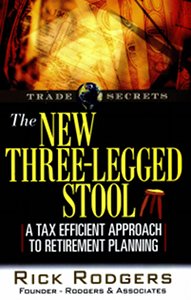
The New Three-Legged Stool book cover
Photos: News and Experts
Rick Rodgers, a certified financial planner and certified retirement counselor, believes the federal and state government is after your money. Well maybe not your money exactly but your retirement money as a part of a larger whole. He is optimistic that some simple adjustments will make it possible for tax payers to pay less in taxes in preparation for their retirement. In his 2009 book, The New Three-Legged Stool A Tax Efficient Approach to Retirement Planning (Marketplace Books, $24.95) he explains his reasoning.
“The IRS sees a huge amount of collective dollars, $17 trillion, to be exact, stashed away in IRAs and retirement savings,” said Rodgers. “This has caused the IRS to become very aggressive in taxing those assets. While you might not think the IRS is after your retirement money, they actually have a big red bull’s-eye painted on your retirement plan. As of September 2010, our country’s national debt totaled more than $13.5 trillion (and the number continues to rise by $2 million every minute!). That amounts to $121,600 of debt for each taxpayer in the United States. Yet this is a mere drop in the proverbial bucket compared to what the government will owe in benefits to Social Security and Medicare recipients far into the future, as well as in pensions to military and civilian government workers.”
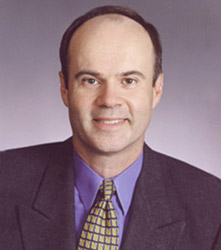
Author Rick Rodgers
The 202-page hard cover book is divided into an introduction and six chapters: Leg One: Tax-Deferred Savings Strategies; Leg Two: After-Tax Savings Strategies; Leg Three: Tax-Free Savings Strategies; Distributions: Strike an Ideal Balance Among All of Your Accounts; Understanding Social Security; and Keep the IRS Out of Your Estate.
The three legs of the stool are tax deferred strategies to save which addresses IRA accounts, 401 (k) and other tax deferred retirement vehicles; strategies to save after taxes which addresses asset allocation, risk reducing options and structuring investments in a tax efficient manner; and tax free strategies like the Roth IRA and Roth 401 (k) and ways to convert accounts into them.
Rodgers is an author, keynote speaker, wealth manager and president of Rodgers and Associates in Lancaster, Pennsylvania. His articles on retirement planning have appeared in Wealth Manager magazine, CPA Magazine and Physician’s Money Digest. He also writes a column for Lancaster County Magazine.
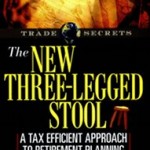
Click to buy The New Three-Legged Stool
Comments:
Filed Under: Books
Posted by Elena del Valle on April 15, 2011

Win at Work book cover
Photos: The Working Circle Teambuilding, Inc.
Diane Katz, Ph.D. offers organizational, development, human resources and coaching consulting services to clients in the services, construction, technology, health care and not for profit sectors. Over the years she has identified some of the methods that in her experience address conflict resolution effectively in the workplace. In 2010, she gathered her most successful workplace conflict resolution and negotiation strategies into a manual of ideas and communications tactics with the goal of helping people achieve win-win solutions to troublesome issues at work.
In Win at Work The Everybody Wins Approach to Conflict Resolution (Wiley, $24.95), a 237-page hardcover book, she outlines The Working Circle, her eight-step process for conflict resolution which encourages an objective, non-combative approach. She begins by explaining her belief that conflict is not inherently good or bad although there is constructive and destructive conflict.
According to Katz, constructive conflict promotes creativity, innovation, betterment, and problem solving attitudes; while destructive conflict may lead to inconsistent organizational goals, many employees pursuing personal goals, deception and inefficient management overall.
The book is divided into twelve chapters and three parts, What is the Working Circle, Understanding Conflict Resolution and From the Working Circle to the Winners Circle.

Author Diane Katz, Ph.D.
The process she supports includes determining what is negotiable and what is not, developing a game plan, and communicating the positive changes that may result. She believes it is important to blend intuition and intellect. In the book, she relies on past experiences from her practice to illustrate possible situations the reader may face; and to solve common challenges like asking for and justifying a raise, dealing with a disruptive business partner, whether to speak up or remain silent about a situation taking place at work, whether to take sides or mediate, dealing with a client’s anger, negotiating independence from a micromanaging boss, standing up to a workplace bully, and managing a troublemaker.
Katz, a Tucson, Arizona based organization consultant and the president of The Working Circle Teambuilding, Inc., has a doctorate degree in Conflict Resolution from Union Institute. Previously she was a human resources executive at American Express, Chase Bank, KPMG Peat Marwick, and Alexander & Alexander.

Click to buy Win at Work!
Comments:
Filed Under: Books
Posted by Elena del Valle on April 1, 2011
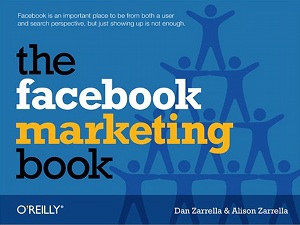
The Facebook Marketing Book book cover
Photo: O’Reilly Media
So Facebook has become large, really large. From a business perspective what does that mean? Can Facebook help you promote your brand, products, and services? While an increasing number of users become frustrated with the social media site’s fluid privacy policies others wonder if the return on investment in time and human resources are worth the effort.
Dan Zarrella, an inbound marketing manager at HubSpot, and his wife Alison Zarrella, a copywriter and social media consultant, believe the popular site can be a useful marketing business tool. They share their ideas on the subject in The Facebook Marketing Book (O’Reilly, $19.99) a newly published book.
“Facebook is today what websites were 10 years ago, it’s a relatively ‘new’ thing, but your customers expect you to be there, and your competitors know this. To younger generations, it’s especially odd to see a company not using Facebook. In short, you can’t afford not to be on it,” said Alison Zarrella, coauthor with her husband, Dan. “After reading this book, readers will have a clear map of what they can do on Facebook and where to start. They’ll know what they can do on their own, and what they might need a little help with.”
The 272-page softcover book features introductions to Profiles, Groups, Pages, Applications, Ads, Events, and Facebook etiquette. It is divided into twelve chapters.
The authors promise readers clear, actionable items to deal with Facebook, information to understand the social networking world, information on technologies necessary to take advantage of social network marketing, possible tactics to use on Facebook and its features, tips on setting campaign goals and learning which Facebook features may be useful to marketing campaigns, and ways to measure campaign results.
Dan Zarrella has written about the science of viral marketing, memetics (an information pattern) and social media on his and other blogs. He was awarded Shorty and Semmy awards for social media and viral marketing. In her work Alison Zarrella has consulted for Holiday Inn, InterContinental Hotels Group, Tide, Always, GMAC Mortgage, General Motors, Samsung, Buick and GMC Sierra.

Click to buy The Facebook Marketing Book
Comments:
Filed Under: Books
Posted by Elena del Valle on March 25, 2011
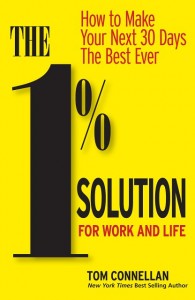
The difference between a winner and a loser is sometimes minuscule. Often those in the lead are only 1 percent better than the next person, according to Tom Connellan, a public speaker and author. To illustrate he points to Olympic games participants. He says an Olympic gold medal winner is only slightly faster than the athlete in the fourth place without any medal recognition; one percent faster, he says.
In The 1% Solution for Work and Life How to Make Your Next 30 Days The Best Ever (Peak Performance Press, $19.95), Connellan discusses the difference an improvement or advantage of even a very small percent can make in the success of athletes, executives, and students. He believes the leverage power of that 1 percent can make a huge difference in the results.
He admits in the book that not everyone is likely to be great but insists that everyone “can be better than they are right now.” He also believes that accomplishing something motivates people to accomplish something else. Setting clear goals, taking action (even small steps are okay), and focusing on effectiveness and efficiency are some of the ways to strive for the one percent improvement he discusses in the book.
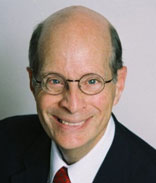
Tom Connellan
He is convinced that small changes in actions may lead to large changes in results. Emphasizing maximum performance in the present; monitoring results and comparing yourself only to yourself are useful ways to improve, according to him.
Additional suggestions include regular vacations, working in periods of concentration and recovery, building breaks during a work period, napping during the day and sleeping eight hours a day.
The 154-page hardcover book published early this year is divided into seven chapters: It’s Turning Point Time!; The Upside-Down Way to Boost Your Motivation; The Physics of Personal Success: How to Create a More Powerful You; Why Practice Doesn’t Make Perfect, and What to Do About It; The 30-Day Formula That Will Change Your Life; How Not Doing Anything Helps You Get More Done; and The Circle is Complete.
Connellan founded a service company and built it into a network of 1,200 instructors serving 300 hospitals and many of the Fortune 500 companies. He is the author of ten book.
Click to buy

The 1% Solution for Work and Life
Comments:
Filed Under: Books
Posted by Elena del Valle on March 18, 2011
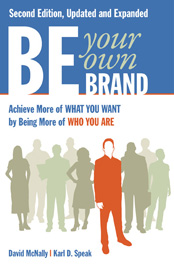
Be Your Own Brand book cover
Photos: Berrett-Koehler Publishers, Inc.
David McNally, a film producer and author, and Karl D. Speak, a brand building consultant and author believe everyone has a personal brand. They think of it as the way that other people perceive who a person is and what he or she stands for. Building a personal brand, they say, is about understanding who someone is and wants to be, and identifying the right way to share that impression with others in a genuine way.
The best way to do that, according to them, is to “make a positive difference in the lives of others.” In 2002 they published the first edition of Be Your Own Brand, a book about personal branding. In Be Your Own Brand Achieve More of What You Want by Being More of Who You Are Second Edition (Berret-Koehler Publishers, $19.95) published this year, they share their original ideas on personal brand building and expand on the changes that have taken place since they published the first edition.
They are convinced that the concept of a personal brand has become more accepted in the business environment; and that social media is playing a role in facilitating the development of personal brands. The idea behind a personal brand is to create a brand that is distinctive, of interest to others and “consistent in the way it is perceived and presented,” they say.
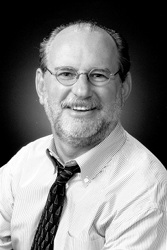
Karl Speak
According to the authors, someone with a strong personal brand uses his or her qualities to make a difference in other people’s lives. The 143-page softcover book is divided into ten chapters and three main sections: Personal Brand Basics, Designing Your Personal Brand of Making a Difference, and Using the Power of Alignment to Build a Strong Personal Brand.
McNally’s books and films have been translated to twelve languages and been available in twenty countries. Speak founded Brand Tool Box Ltd., an internal branding company, in 1984.
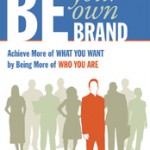
Click to buy Be Your Own Brand
Comments:
Filed Under: Books
Posted by Elena del Valle on March 11, 2011
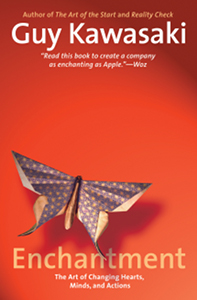
Enchantment book cover
Photos: Guy Kawasaki
Why do people of all ages stand in line and wait with anticipation to purchase new Apple products like the iPhone, iPod, iPad? Then, a few months later return to buy the newest version of the same product? Why did mobile services provider T-Mobile recently loose more than 300,000 customers many of which are thought to have become AT&T and Verizon customers to get their hands on the iPhone? Guy Kawasaki, a former Apple executive, believes it is the result of something he calls Enchantment.
This month, he explains what he believes makes people, brands and products desirable in Enchantment The Art of Changing Hearts, Minds, and Actions (Portfolio/Penguin Group, $26.95), his new 211-page hardcover book. He believes this quality of Enchantment transforms relationships and situations, converts hostility into civility and civility into affinity, converting skeptics into believers without manipulation.
He proposes an attitude that drives voluntary, lasting and happy (he calls it delightful) change in others by focusing on people’s wants, being likable and trustworthy and representing a worthy cause. At the end of each chapter, he showcases an example written by a guest contributor to illustrate the point he wrote about in that chapter.
The book, peppered with how-to tips, is divided into an Introduction and Conclusion as twelve other chapters: Why Enchantment?, How to Achieve Likability, How to Achieve Trustworthiness, How to Prepare, How to Launch, How to Overcome Resistance, How to Make Enchantment Endure, How to Use Push Technology, How to Use Pull Technology, How to Enchant Your Employees, How to Enchant Your Boss, and How to Resist Enchantment.

Guy Kawasaki, author, Enchantment
He urges those who enchant to do so responsibly so that their skills benefit all involved. To make Enchantment last he thinks it is necessary to present an idea that other can internalize allowing them to reciprocate and fulfill their commitment. He also suggests relying on a network of supporters among developers, consultants and cause friendly people.
Kawasaki, the author of nine previous books, is co-founder of Alltop and founding partner at Garage Technology Ventures.

Click to buy Enchantment
Comments:
Filed Under: Books
Posted by Elena del Valle on March 4, 2011
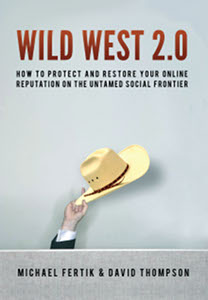
Wild West 2.0 book cover
Photos: AMACOM
Attorneys Michael Fertik of Redwood City and David Thompson of Los Angeles, California believe the internet is a new world where many of the rules we know and abide by do not apply. Convinced that the online world is a kind of Wild West, they named their recently released book Wild West 2.0 How to protect and restore your online reputation on the untamed social frontier (AMACOM, $24,95).
Both used to work for ReputationDefender. In January 2011, a company name change to Reputation.com was announced. After the book was published Thompson moved on to a law firm. It took the attorneys several years to conduct the research for the book and one year to write it. In the book, they assert that because search engines do not rank results based on the veracity of the information baseless attacks may spread in the digital world without checks of any kind.
Thompson explained by phone that since the book was published “it is becoming even more important to be aware of online reputation issues;” that Google still dominates the market and constantly changes its natural results formula without revealing, except for a very broad outline, the selection criteria. A customer whose privacy is violated or whose reputation is wrongly described online may go out of business, he explained when asked about the business consequences and importance of reputation management.
The authors offer “proven strategies for building a storm proof reputation.” In the book, they explain the parallels they see between the lawless frontier in the Old West and today’s internet; share stories of anonymous attacks; discuss sites that share private data; make suggestions for readers to locate online mentions about them and their businesses online; outline strategies to respond to baseless information with truthful content; and address methods for reputation repair and protection.

Co-author Michael Fartik
The 264-page hardcover book published in 2010 is divided into 14 chapters: Welcome to the New Digital Frontier; Your Online Reputation is Your Reputation; The Internet is the New Wild West; The Forces Driving Online Reputation; Anonymous Cowards; Google Gone Wild: The Digital Threat to Reputation; Why People Attack Each Other Online; Types of Internet Attacks; How to Measure Damage to Your Internet Reputation; Your Reputation Road Map and Online Reputation Audit; Getting Proactive: The Best Defense is a Good Offense; Recovering from Online Smears: Restoring Your Reputation After the Damage Has Been Done; Protect Your Small Business and Your Professional Reputation; and Conclusion: Embrace the Internet.

Co-author David Thompson
According to a Reputation.com spokesperson, the book hit some “great milestones on Amazon” such as the number one place in the Public Relations and Computers and Internet categories; second place in Marketing and Sales; third place in Business and Management; twelfth place in Hot New Releases, and twenty-second place overall. Fertik is the founder and chief executive officer of Reputation.com (formerly ReputationDefender). He serves on the advisory board of the Internet Keep Safe Coalition.
Thompson was general counsel and chief privacy officer of Reputation.com at the time the book was written. He is now an attorney with Munger Tolles and Olson LLP where he is developing the firm’s reputation management practice.

Click to buy Wild West 2.0
Comments:
Filed Under: Books
Posted by Elena del Valle on February 25, 2011
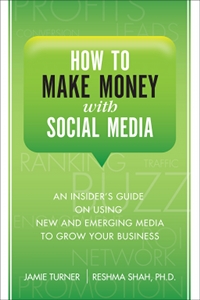
How to Make Money with Social Media book cover
Photos: FT Press
While social media are blazing across the internet there is much confusion and debate regarding their solid, measurable usefulness from a return on investment perspective. Jamie Turner, chief content officer of The 60 Second Marketer, and Reshman Shah, Ph.D., assistant professor of Marketing at Emory University, address the issue of profits in How to Make Money with Social Media An Insider’s Guide on Using New and Emerging Media to Grow Your Business (FT Press, $24.99).

Reshma Shah, Ph.D., coauthor, How to Make Money with Social Media
The authors start with the premise that the only reason to be involved in social media is to make money and they believe that it is possible for businesses to make money provided social media users follow certain steps. They assert that such steps are part of a “…well thought out, well executed, and well managed” campaign with clear strategies, objectives and tactics. The good news is that social media doesn’t have to be time consuming, according to them.
Their book, they explain at the beginning, was written to provide information for readers wanting to set up, launch and maintain a money-making social media campaign. At the end of each chapter they provide a summary section and at the end of the book there is a summary type chapter with a series of check lists. They close with three recommendations: do something even if it’s not perfect; start each day with ten social media tasks; and visit Turner’s website for ideas.

Jamie Turner, coauthor, How to Make Money with Social Media
The book, written in a somewhat informal style, also includes references to the 60 Second Marketer website. The 289-page hard cover book published this year is divided into twenty-four chapters and six parts: The Social Media Landscape, How to Set Yourself Up for Social Media Success, Social Media Platforms, Social Media Integration, How to Measure Social Media and Conclusion.
Turner is a marketer with 20 years of experience. Shah is a founder and partner at Inflexion Point Marketing Group.

Click to buy How to Make Money with Social Media
Comments:
Filed Under: Books







































